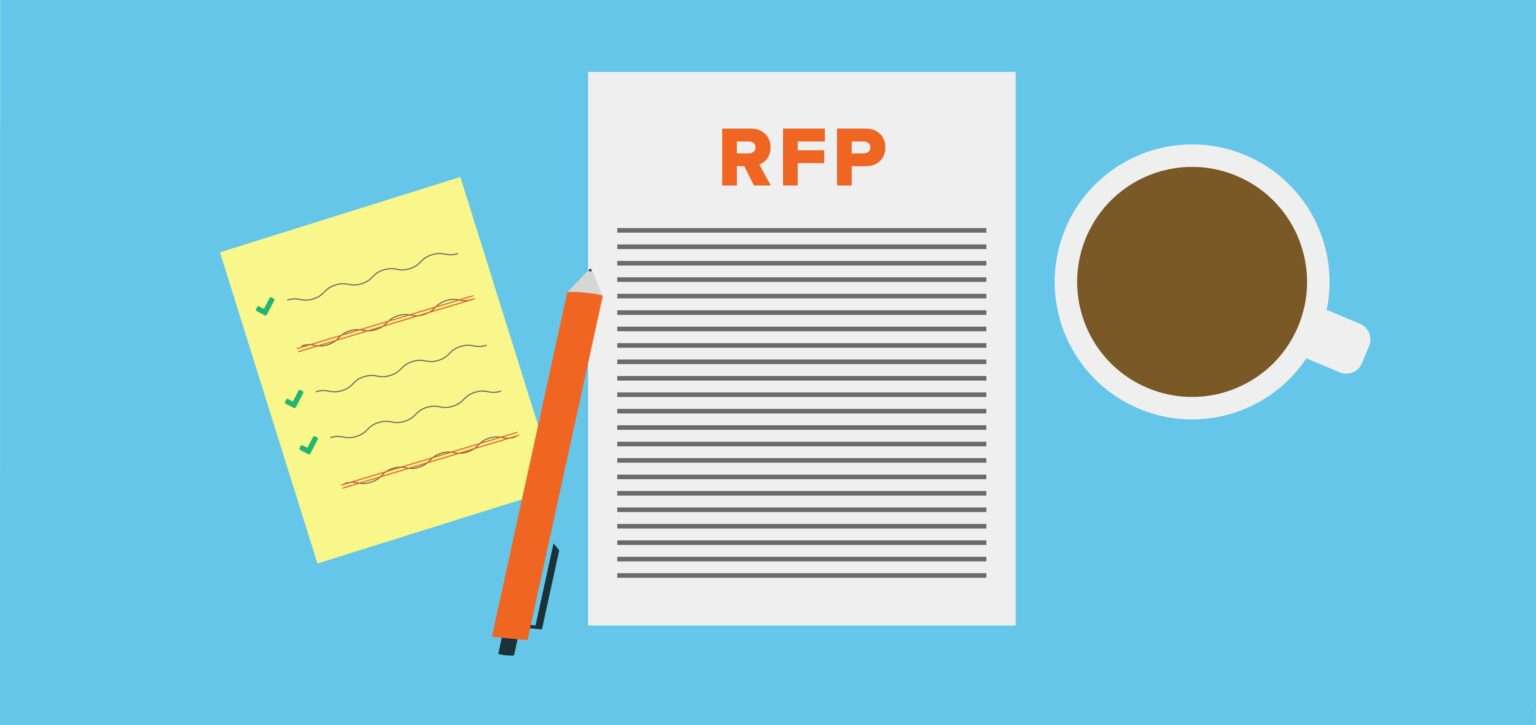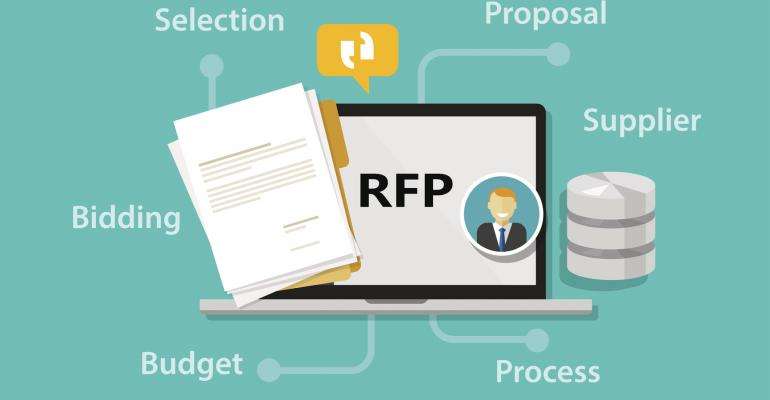A Request for Proposal (RFP) is a work document that announces
and describes a project and solicits bids from qualified contractors to complete it.
Most of the organizations prefer to launch their projects using RFPs,
and many governments always use it.
When using the request for proposals,
the bidding entity is responsible for evaluating the feasibility of submitted bids,
The financial health of the applicant companies,
and the ability of each bidder to implement the project.
Main sockets
- A Request for Proposal (RFP) is a project announcement made publicly by an organization indicating a request for bids for contractors to complete the project.
- The request for proposal (RFP) defines the project for the company issuing it and for the companies that respond to it.
- The RFP describes the project, its objectives, the sponsoring organization and outlines the bidding process and contract terms.
- RFPs are used by most government agencies and many private companies and organizations.
- The alternative is a less formal process that may fail to identify the best seller and best plan to complete the project.

Understanding a request for proposal (RFP)
RFPs are used for complex projects, often requiring a number of subcontractors.
They describe the organization that issued the request for proposals,
the scope of the project being undertaken, and the criteria for evaluating entries.
They also explain the bidding process and the terms of the contract.
The applications include a statement of work describing the tasks to be performed by the winning bidder and the timetable for completion of the work.
The RFPs also advise bidders on how to prepare proposals,
with specific instructions on how to format and submit bids.
They generally include instructions about what information the bidder should include and the required form.
The proposal should not be so detailed as to hinder the contractor’s creativity,
or so vague as to leave the contractor at a loss.
Most RFPs are also issued by government agencies and other organizations in the public sector.
They are generally required to open up competition between private firms and remove bias from the process.
Agencies want to make sure they get the lowest and most competitive offers.
However, any private or public organization may put up an RFP for multiple bids and a variety of views on the project.
For example, a company that wants to change its reporting process from a paper-based system to a computer-based system may offer
request for a hardware, software, and user training program to build and integrate the new system into action.
A competitive bidding process may give them greater visibility into the available alternatives.
RFP requirements
Government agencies or other entities may be required to issue requests for proposals to provide full and open competition and to reduce the cost of a solution.
Acceptance of the most responsive bid to specifications may not always mean the lowest bid.
Skillfully creating an RFP can ensure the success or failure of the resulting solution.
If the specific requirements are too vague, the bidder may not design and implement an adequate solution to the problem.
If the requirements are too detailed and restrictive,
bidders’ creativity may be limited.
The RFP process also begins with the drafting of the RFP.
Bidders review the petition and make suggestions for improvement.
After the feedback is implemented,
he final request for the proposal is issued.
Then the presenters present their proposals.
The client narrows the selection to a small group of bidders and enters into negotiations over prices and technical details.
The client may also request the remaining bidders to submit the best final offer before the contract is awarded.
Contract is then submitted to the company that offers the best solution to the problem.

Benefits of RFP
The RFP is, in part, an advertisement, announcing the continuation of the project and opening the door to qualified candidates who can get the job done.
In government, the solicitation for proposals has been adopted as a way to ensure the removal of nepotism as a factor in contract reward.
It also opens up the process to competition,
which is expected to keep project costs down.
An alternative to the RFP is a less formal process that requires the project manager to research and identify potential vendors for the project.
Depending on how comprehensive the research is,
the potential responses can be limited.
RFP vs. RFQ vs. RFI
Request for Proposal (RFP), Request for Quotation (RFQ),
and Request for Information (RFI) are three different types of documents that companies
and other entities use to reach out to the business community for suppliers or contractors who may be able to for business.
- The RFP, as mentioned above, announces a specific project that has been planned and asks for contractors capable of completing the task.
- A request for quotation (RFQ) is a request sent to a number of suppliers seeking bids for a contract to supply certain products or services.
- The order should specify the required quality, quantity and timing that the company or organization wants.
- A request for information (RFI) is an invitation to suppliers for written information about the products and services they can offer.
It can be used to collect information for the supplier database for future reference.
For more architectural news






